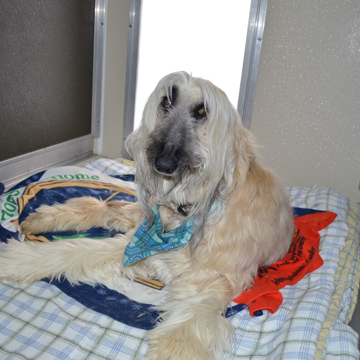 Morristown, TN
Morristown, TN
Let’s start off by saying that crating has to do with a dog’s natural instinct as a den animal. For a wild dog, their den is their home, it’s their safe place, where they take refuge, eat, and sleep. While crating your dog can be beneficial in certain situations, we also want to point out that no dog should be left in a crate for long periods of time without adequate food, water, and bathroom breaks. Now, let’s move on to what you’re here for – tips on crate training your dog.
If you just got a puppy, or if you have an older dog, crating your pet could help house train them, and keep them out of trouble while you are away for short periods of time. Even though dogs have a natural instinct to den, your dog may be unwilling to go into his crate. Here’s how you can better acclimate your dog to this new concept.
First and foremost, always associate the crate with something pleasant; never use it as a form of punishment. Also, remember to take baby steps when getting your dog used to his crate, don’t rush the matter.
Tip 1: Introduce your dog to his crate
Choose a location in your home where your dog feels comfortable, like in the family room. Put his favorite blanket, toy, or bedding in the crate, leaving the door open. Gently guide your dog over to the crate, talking to him in a soft, calm voice, never forcing him into the crate. You can try to put some treats near the crate, or even inside, to try and coerce your dog inside. This lets him become acquainted with the crate.
Tip 2: Mealtime should take place inside the crate
Feed your dog his meals inside of his crate. This will help your dog associate something pleasant, like food, inside his crate, helping him become more comfortable and relaxed around it. Only place the dish as far inside as your dog is willing to go. For instance, don’t start by placing the bowl in the very back if your dog isn’t willing to go inside. Instead, meet him halfway, or maybe start by placing the bowl at the entrance. Ideally, you want to work his way up to having him complete his meal inside the crate, with the door shut. Just be sure to open the crate door as soon as he is finished. As each feeding is successful, without the dog crying or whining, leave the door closed a few minutes longer. Never give in and open the door as soon as your dog whines, however, because this only teaches him how to get his way.
Tip 3: Extend crating periods
If your dog is eating his meals inside of the crate without showing anxiety or fear, it is time to start crating him for short periods of time. Say for instance, when you take a shower or leave the house to go to the grocery store. Command your dog into his crate and provide a small treat or reward, and use this method each time you crate him. Eventually begin to practice crating your dog at night. You may need to start by placing the crate near your bed if your dog is too anxious or experiences social isolation when crating him in a room alone.
We hope that you have found these tips on crate training your dog helpful. It is important not to use your dog’s crate as a way of punishment or isolation. Instead, create an atmosphere of security, shelter, and relaxation for your dog.
Please keep in mind that these are merely tips to help you crate train your dog. In some situations, you may need to seek the counsel of an experienced dog trainer in Morristown or Jefferson City such as the ones on staff at AllDogs Canine Care Center. To learn more about our services, please call (865) 475-2225.


